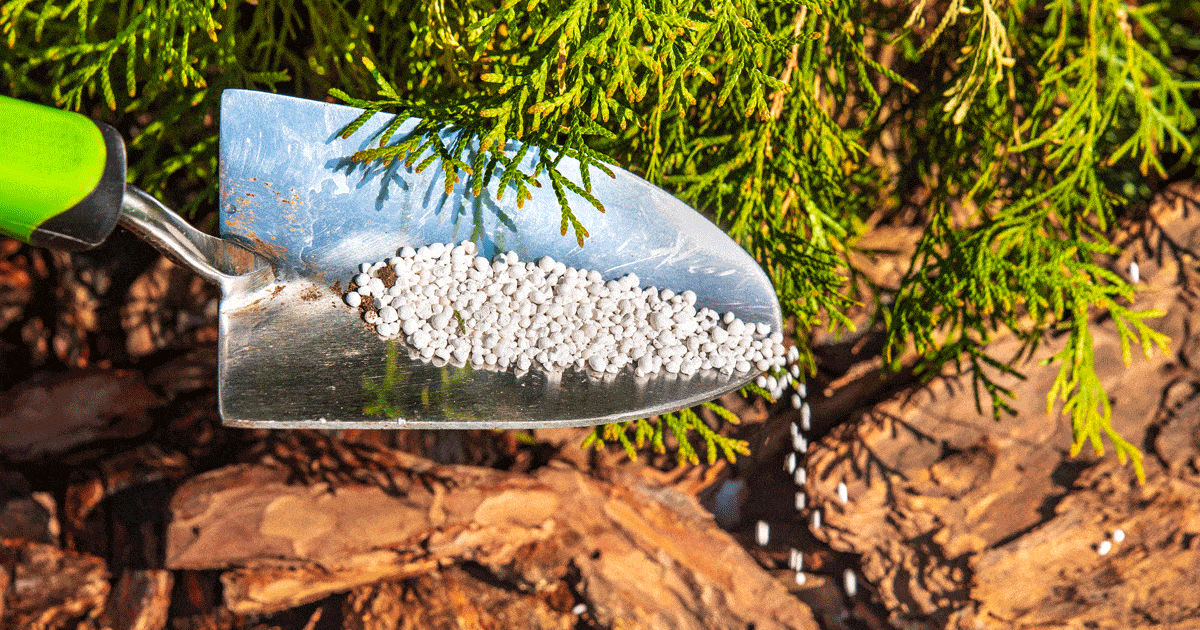Most soil doesn’t naturally have all the nutrients plants need to thrive, so we add fertilizer to help promote healthy roots and foliage. Since plants continually absorb the nutrients from the soil, fertilizing is an on-going process.
But when we go to the store and see several different types of fertilizer, how do we know which ones to choose? Learning some fertilizer facts will help you decide what fertilizer is right for you and your plants.
Organic or Synthetic Fertilizer?
One of the first things you need to consider is whether to use organic or synthetic fertilizers. Organic and synthetic fertilizers do react with soil and plants differently, and this has a lot to do with what they are made from. Because organic fertilizers are made up of natural matter from plants and animals, most of the contents are water insoluble and slowly release into the soil, helping to create long-lasting fertility. The soil becomes even more fertile as beneficial fungi, bacteria, and worms feed off and generate natural matter.
Since synthetic fertilizers are man-made and factory-produced, they have a concentrated amount of nutrients that will impact your plants much faster than the organic alternative. Where organic fertilizers are best for the environment and offer more long-term benefits for the soil, synthetic fertilizers quickly provide nutrients to troubled soil and plants.
What form of fertilizer works best?
The form of fertilizer similarly affects the rate at which your plants receive nutrients. Fertilizers come in many different forms, the most common being granular, encapsulated, and liquid. Granular and encapsulated fertilizers are slow-release products that stay in the soil longer and require fewer applications. With these fertilizers, your plants receive a steady supply of nutrients without over-fertilizing.
Granular fertilizers work great in beds and containers, especially ones with new plants. Encapsulated fertilizers are ideal for container plants as the extra coating of resin or soluble sulfur causes the nutrients to be released the slowest, but last the longest.
Liquid fertilizers are a completely different story. These fertilizers produce results quickly, but need to be applied more frequently, for example, every few weeks instead of months. Liquid fertilizers are often expensive and you need to be careful not to over-fertilize. Use liquid fertilizers when your plants need help now and use granular or encapsulated fertilizers to keep the nutrients coming.
What about the main ingredients of fertilizers and how do they help plant growth?
Nitrogen, phosphorus, and potassium are the three main fertilizer ingredients. Though these ingredients aid plant growth in several ways, typically, nitrogen promotes foliage growth and health, phosphorus helps flowers and roots develop, and potassium (aka “potash”) strengthens the plant’s foliage and roots from severe conditions and disease.
Many fertilizers have a number combination on the container showing the ratio of these main ingredients, for example, 10-5-10. This number is called the “NPK” number since the first number represents the fertilizer’s amount of nitrogen, the second number represents the fertilizer’s amount of phosphorus, and the third number represents the amount of potassium. By knowing how each ingredient affects plant growth, you can determine which fertilizer you need.
For example, if you want a showy rebloom from your Southern Living Delta Jazz Crapemyrtle or Early Bird Crapemyrtle, you can trim spent blooms now and apply a fertilizer with higher amounts of nitrogen.







